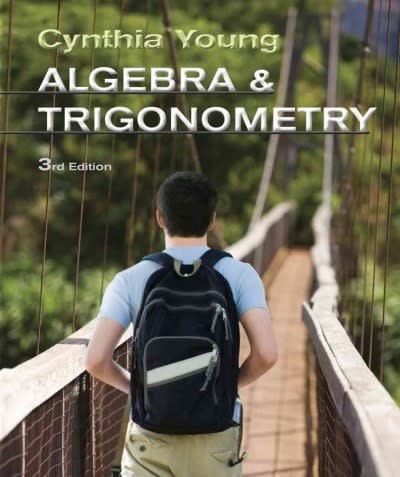Answered step by step
Verified Expert Solution
Question
1 Approved Answer
all, Question 1. An observed frequency distribution is as follows. Number of successes 0 1 2 3 Frequency 5 30 42 23 Let X= the
all, Question 1. An observed frequency distribution is as follows. Number of successes 0 1 2 3 Frequency 5 30 42 23 Let X= the number of successes in the samples. Assume that X has a binomial distribution with n=3 and p=2/3, use the binomial probability formula, what is the probability corresponding to the category X=2? Select one: a. None of the other anwers is correct. b. 0.4444 c. 0.2222 d. 0.0370 e. 0.2963 Question 2. To test whether GENDER (male and female) and NUMBER OF ABSENCES are related, we use the following table. Number of absences 0 1-2 3-5 6+ Gender male 18 18 16 8 female 22 12 4 2 Total: 100. Assume that the sample data are randomly selected. The null hypothesis for this test is Select one: a. GENDER and NUMBER OF ABSENCES are related b. p_{male} = p_{female} c. p_0 =0.40, p_{1-2} = 0.30, p_{3-5} = 0.20, p_{6+} = 0.10 d. p_0 = p_{1-2} = p_{3-5} = p_{6+} = 1/4 e. GENDER and NUMBER OF ABSENCES are independent Question 3. An observed frequency distribution is as follows. Number of successes 0 1 2 3 Frequency 5 30 42 23 Let X= the number of successes in the samples. Assume that X has a binomial distribution with n=3 and p=2/3, use the binomial probability formula, what is the expected value corresponding to the category X=0? Select one: a. 29.6296 b. 44.4444 c. None of the other anwers is correct. d. 3.7037 e. 22.2222 Question 4. This question refers to a sweepstakes promotion in which respondents were asked to select what color car they would like to receive if they had the winning number. For a random sample of respondents the choices were 24 blue (B), 34 green(G), 66 red(R), and 36 white(W). Test at the 0.05 level the claim that the population prefers each colour equally. The conclusion is Select one: a. There is sufficient evidence to support the claim that the population do not prefer each color equally. b. We fail to reject the null hypothesis. c. There is sufficient evidence to support the claim that the population prefers each color equally. d. We reject the null hypothesis. Question 5. An observed frequency distribution is as follows. Number of successes 0 1 2 3 Frequency 5 30 42 23 Let X= the number of successes in the samples. Assume that X has a binomial distribution with n=3 and p=2/3, use the binomial probability formula, what is the expected value to the category X=2? Select one: a. None of the other anwers is correct. b. 44.4444 c. 22.2222 d. 3.7037 e. 29.6296 Question 6. An observed frequency distribution is as follows. Number of successes 0 1 2 3 Frequency 5 30 42 23 Let X= the number of successes in the samples. Use a 0.01 significance level to test the claim that the observed frequencies fit a binomial distribution for which n=3 and p=2/3. What is the conclusion? Select one: a. We have sufficient evidence to conclude that the observed frequencies are equally. b. We have sufficient evidence to conclude that the observed frequencies do not fit a binomial distribution for which n=3 and p=2/3. c. We have sufficient evidence to conclude that the observed frequencies fit a binomial distribution for which n=3 and p=2/3. d. We have sufficient evidence to conclude that the observed frequencies are not equally. Question 7. This question refers to a sweepstakes promotion in which respondents were asked to select what color car they would like to receive if they had the winning number. For a random sample of respondents the choices were 24 blue (B), 34 green(G), 66 red(R), and 36 white(W). Test at the 0.05 level the claim that the population prefers each colour equally. The expected number of people who prefer white is Select one: a. 36 b. 25 c. None of the other anwers is true. d. 40 Question 8. This question refers to a sweepstakes promotion in which respondents were asked to select what color car they would like to receive if they had the winning number. For a random sample of respondents the choices were 24 blue (B), 34 green(G), 66 red(R), and 36 white(W). Test at the 0.05 level the claim that the population prefers each colour equally. The critical value chi_square_c is Select one: a. 7.815 b. 22.412 c. 24.600 d. 0 e. 9.488
Step by Step Solution
There are 3 Steps involved in it
Step: 1

Get Instant Access to Expert-Tailored Solutions
See step-by-step solutions with expert insights and AI powered tools for academic success
Step: 2

Step: 3

Ace Your Homework with AI
Get the answers you need in no time with our AI-driven, step-by-step assistance
Get Started


